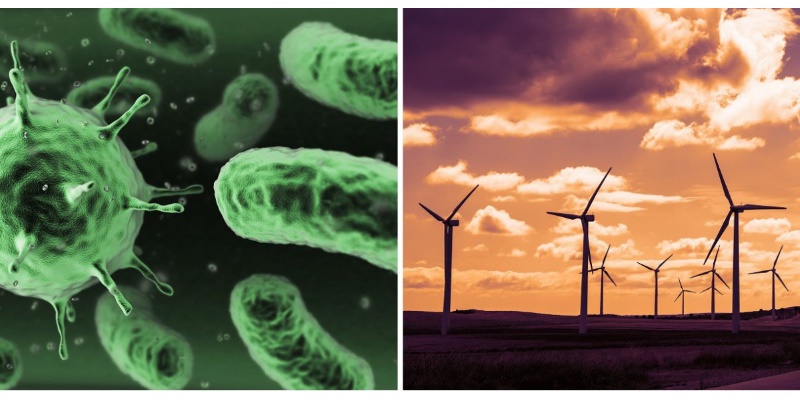- Home
- Science
- Science News
- Bacteria Can Be Used to Power Micro Machines, Including Smartphone Components: Study
Bacteria Can Be Used to Power Micro-Machines, Including Smartphone Components: Study

Using computer simulations, the scientists from Oxford University demonstrated that the chaotic swarming effect of dense active matter such as bacteria can be organised to turn cylindrical rotors and provide a steady power source.
"Many of society's energy challenges are on the gigawatt scale, but some are downright microscopic. One potential way to generate tiny amounts of power for micromachines might be to harvest it directly from biological systems such as bacteria suspensions," said study co-author Tyler Shendruk.
The study results were published recently in the journal 'Science Advances'.
Swimming bacteria are normally too disordered to extract any useful power from. But when the team immersed a lattice of 64 symmetric microrotors into a dense bacterial suspension, the bacteria spontaneously organised itself in such a way that neighbouring rotors began to spin in opposite directions - a simple structural organisation reminiscent of a windfarm.
"The amazing thing is that we didn't have to pre-design microscopic gear-shaped turbines. The rotors just self-assembled into a sort of bacterial windfarm," Shendruk said.
"When we did the simulation with a single rotor in the bacterial turbulence, it just got kicked around randomly. But when we put an array of rotors in the living fluid, they suddenly formed a regular pattern, with neighbouring rotors spinning in opposite directions," he added.
At micro scales, the simulations show that the flow generated by biological assemblies is capable of reorganising itself in such a way as to generate a persistent mechanical power for rotating an array of microrotors, which could be harnessed to power micro-machines.
Get your daily dose of tech news, reviews, and insights, in under 80 characters on Gadgets 360 Turbo. Connect with fellow tech lovers on our Forum. Follow us on X, Facebook, WhatsApp, Threads and Google News for instant updates. Catch all the action on our YouTube channel.
Related Stories
- Samsung Galaxy Unpacked 2025
- ChatGPT
- Redmi Note 14 Pro+
- iPhone 16
- Apple Vision Pro
- Oneplus 12
- OnePlus Nord CE 3 Lite 5G
- iPhone 13
- Xiaomi 14 Pro
- Oppo Find N3
- Tecno Spark Go (2023)
- Realme V30
- Best Phones Under 25000
- Samsung Galaxy S24 Series
- Cryptocurrency
- iQoo 12
- Samsung Galaxy S24 Ultra
- Giottus
- Samsung Galaxy Z Flip 5
- Apple 'Scary Fast'
- Housefull 5
- GoPro Hero 12 Black Review
- Invincible Season 2
- JioGlass
- HD Ready TV
- Laptop Under 50000
- Smartwatch Under 10000
- Latest Mobile Phones
- Compare Phones
- OnePlus Ace 6T
- OPPO A6x 5G
- Samsung Galaxy Z TriFold
- Poco F8 Ultra
- Poco F8 Pro
- Huawei Mate 80 RS Master Edition
- Huawei Mate 80 Pro Max
- Huawei Mate 80 Pro
- Asus ProArt P16
- MacBook Pro 14-inch (M5, 2025)
- Poco Pad M1
- Poco Pad X1
- Just Corseca Skywatch Pro
- Honor Watch X5
- Acerpure Nitro Z Series 100-inch QLED TV
- Samsung 43 Inch LED Ultra HD (4K) Smart TV (UA43UE81AFULXL)
- Asus ROG Ally
- Nintendo Switch Lite
- Haier 1.6 Ton 5 Star Inverter Split AC (HSU19G-MZAID5BN-INV)
- Haier 1.6 Ton 5 Star Inverter Split AC (HSU19G-MZAIM5BN-INV)

















